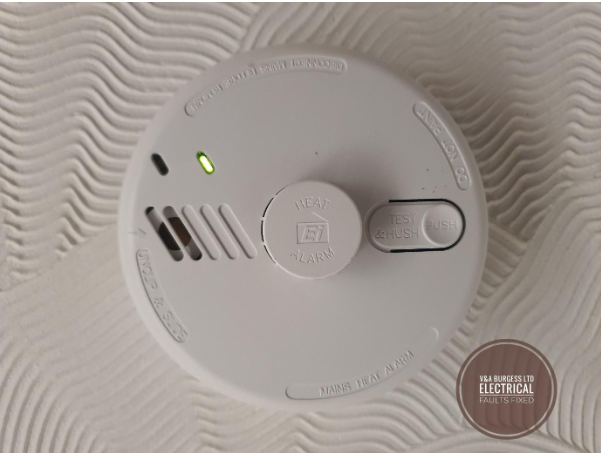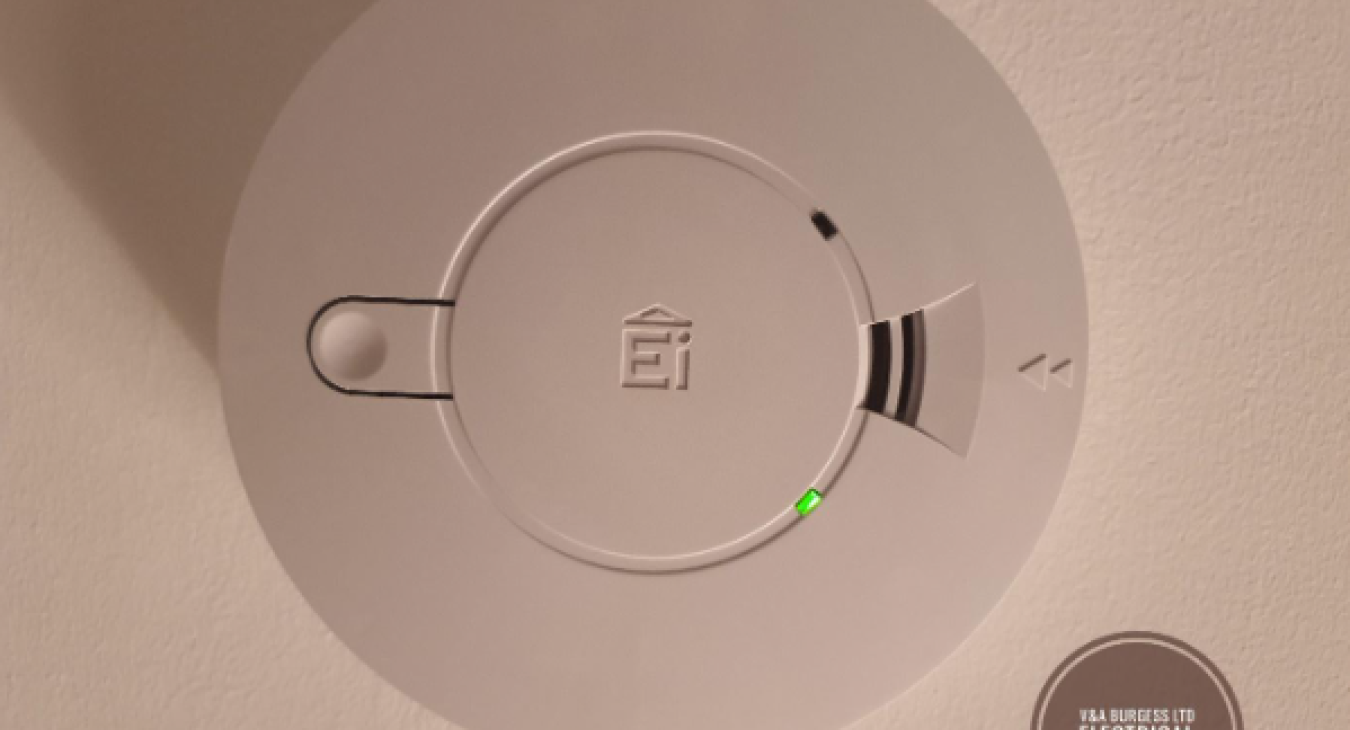Smoke Alarm chirping or beeping? Why and how to stop - Electrical Faults Fixed
Table of Contents
- Why smoke detectors chirp: A Complete Guide to Smoke Alarm Signals and Maintenance
- Different Types of Smoke Detector Alerts
- What types of Smoke Detectors are there?
- Advanced Detection Systems
- Most Common Causes of False Alarms
- Maintenance and Testing
- Battery Management
- Warranty and Replacement
- When to Replace Your Detector
- Additional Safety Considerations
- Professional Installation and Maintenance
- Emergency Response
- Conclusion
1) Why smoke detectors chirp: A Complete Guide to Smoke Alarm Signals and Maintenance
When it comes to home safety, few devices are as important as smoke detectors. Yet, many homeowners find themselves with smoke alarm chirping at strange times, particularly in the middle of the night. Why do smoke detectors do this? The answer is simple.
Smoke detectors will chirp when they are trying to tell you something is wrong with their operation. Whilst a beeping smoke detector is annoying, it is important to address the problems and not simply remove it.
Back to top2) Different Types of Smoke Detector Alerts
Continuous Sounding
A continuously sounding alarm indicates the detection of smoke or fire. This urgent signal requires immediate attention and could be indicating signs of fire or another potential hazard. In such cases, follow your fire escape plan and contact the fire department if necessary.
Intermittent Chirping
A smoke detector that chirps at regular intervals typically indicates one of several issues:
- Low Batteries: The most common reason for a smoke alarm chirping is dead batteries or low battery voltage. Even mains voltage smoke detectors have a battery back up in case the mains power fails. The smoke detector may beep to let you know that mains power has failed or the battery is in need of replacing.
- End of Life: Many modern smoke detectors have an expiration date or use-by date. This date is often written on the side or base of the detector to let you know when they need to be replaced.
- Electrical Issues: Hard-wired smoke detectors may chirp due to a power surge or power outage.
- Sensing Chamber Problems: Dust or debris in the detector part of the smoke detector.
3) What types of Smoke Detectors are there?
Battery-Operated vs. Hardwired Systems
Battery-Operated Smoke Alarms – These devices rely solely on battery power and will require regular battery checks to ensure that there is sufficient voltage to continue safe operation. They often feature a front load battery design which is great for replacing batteries. These devices are best used in areas where existing wiring is not available to use mains or hard-wired smoke alarms.
Hard-Wired Smoke Alarms – These devices are connected to the AC power supply in your home and will include backup battery protection for power failures. They are the most reliable devices for long term use and will normally require professional installations. Many hard-wired smoke alarms can be interlinked with other smoke alarms so, in the event of a fire, all alarms will operate in the property instead of just the one nearest the fire.
Back to top4) Advanced Detection Systems
Dual-sensor Model – This type of smoke detector will combine different detection technologies and can reduce the incidence of false alarms. These devices provide comprehensive protection for homes.
Carbon Monoxide Detection – Many modern smoke alarms will incorporate carbon monoxide detection. This is absolutely vital in homes that contain gas appliances as carbon monoxide is lethal and odourless.
Heat Detectors only – These types of detectors will only detect the heat from a fire but not the smoke. This makes them particularly good for kitchen areas where burnt cooking smells can be common but without associated fires. This reduces the incidence of false alarms.

(PHOTO: Heat Detector)
Back to top5) Most Common Causes of False Alarms
Understanding what triggers false alarms can help prevent unnecessary panic. Here are some of the most common causes:
Cooking Activities
- Steam from cooking
- Smoke from burnt food
- Combustible products near the kitchen
Environmental Factors
- High humidity
- Dust in the sensing chamber
- Ceiling fan interference
- Unusual temperature fluctuations
Installation Issues
- Proximity to bathrooms
- Poor placement near an open window
- Interference from circuit breakers
- Poorly installed devices
6) Maintenance and Testing
Use the Test Button
- Test monthly
- Listen for a single beep
- Replace if unresponsive
Cleaning
- Use a vacuum cleaner to remove dust
- Clean the exterior regularly
- Avoid using chemicals
Above all else, follow the manufacturer’s instructions regarding any maintenance and cleaning procedures that are necessary regarding their smoke detection equipment. Without careful consideration of the manufacturer’s instructions, it may be easily possible to damage the devices.
Back to top7) Battery Management
Follow these following steps for proper battery maintenance:
- Check the battery drawer monthly. Batteries can go bad and leak which may cause contacts to fail, devices to become corroded or other damage to the detectors.
- Replace old batteries according to manufacturer guidelines. Many devices will not require new batteries for many years and some manufacturers will specify a brand or model number of battery that should be installed.
- Note the date of purchase of new batteries, perhaps use a slim permanent marker to write the replacement date on the side of your detector so you can remember when replacement needs to take place again.
8) Warranty and Replacement
Understanding Your Warranty
- Check the duration of the warranty period
- Keep documentation for potential warranty claims
- Note the effective date of coverage
- Understand the limited warranty terms
9) When to Replace Your Detector
Several factors determine when to replace your safety products:
Age
- Check the manufacture date
- Look for date code information
- Replace after 10 years per National Fire Protection Association guidelines
Performance Issues
- Frequent false alarms
- Failure to respond to the test button
- Physical damage to the hardwired device
10) Additional Safety Considerations
Creating a Comprehensive Safety System
Emergency Preparedness
- Maintain working fire extinguishers
- Create and practice a fire escape plan
- Install detectors in every sleeping area
Advanced Features
- Consider detectors with additional features
- Look into carbon monoxide detectors
- Investigate heat alarms for specific areas
11) Professional Installation and Maintenance
For peace of mind, consider professional installation, especially for:
- Hard-wired detector systems
- Complex multi-unit setups
- Integration with home security systems
Professional installation of smoke detection systems ensures that wiring connections will be undertaken correctly, interlinking and connection issues can be minimized and the system will come with a guarantee.
Back to top12) Emergency Response
If you can't resolve the chirping or experience a fire alarm beeping:
- Never ignore recurring alarms
- Contact a professional if unclear about the cause
- Consider replacement if it's near its end of life
Whilst a beeping smoke detector is not necessarily an emergency, the sound can be particularly irritating for many people and may mean that you are unable to sleep, concentrate or focus properly on work tasks and home activities. Don’t forget that the beeping could indicate that the device WILL NOT function in the event of a fire and in which case could be an emergency!
Back to top13) Conclusion
Smoke alarms chirping is the way of the device letting you know there is a problem. By ensuring that your devices are operating properly you are protecting against property damage and ensuring your family's safety. By following proper maintenance procedures and responding promptly to warning signals, you can maintain an effective early warning system for fire protection. Remember that a working smoke detector is your first line of defense against fire hazards, and maintaining it properly is a small price to pay for the peace of mind it provides.
Back to top
- Log in to post comments

